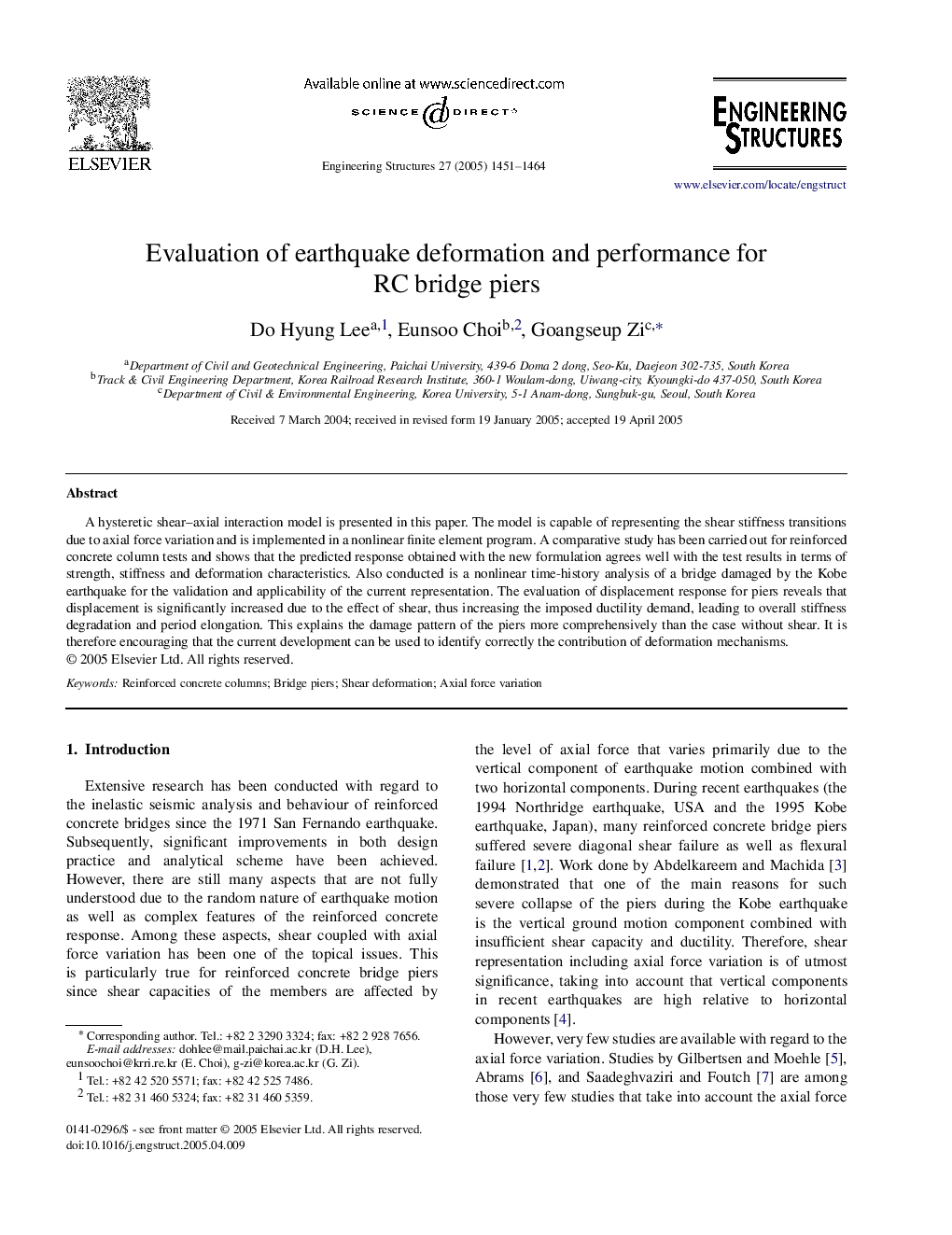| Article ID | Journal | Published Year | Pages | File Type |
|---|---|---|---|---|
| 10286916 | Engineering Structures | 2005 | 14 Pages |
Abstract
A hysteretic shear-axial interaction model is presented in this paper. The model is capable of representing the shear stiffness transitions due to axial force variation and is implemented in a nonlinear finite element program. A comparative study has been carried out for reinforced concrete column tests and shows that the predicted response obtained with the new formulation agrees well with the test results in terms of strength, stiffness and deformation characteristics. Also conducted is a nonlinear time-history analysis of a bridge damaged by the Kobe earthquake for the validation and applicability of the current representation. The evaluation of displacement response for piers reveals that displacement is significantly increased due to the effect of shear, thus increasing the imposed ductility demand, leading to overall stiffness degradation and period elongation. This explains the damage pattern of the piers more comprehensively than the case without shear. It is therefore encouraging that the current development can be used to identify correctly the contribution of deformation mechanisms.
Related Topics
Physical Sciences and Engineering
Earth and Planetary Sciences
Geotechnical Engineering and Engineering Geology
Authors
Do Hyung Lee, Eunsoo Choi, Goangseup Zi,
